Tell us about your approach to photography. How it all started? What are your memories of your first shots?
Ellie Davies (ED): My Dad and his best friend Tony were passionate photographers and collector of cameras. I grew up surrounded by camera equipment and technical discussions about darkroom techniques and flash lighting, but as a child I wasn’t very interested in the techie side of photography, I preferred the tactile nature of painting and clay.
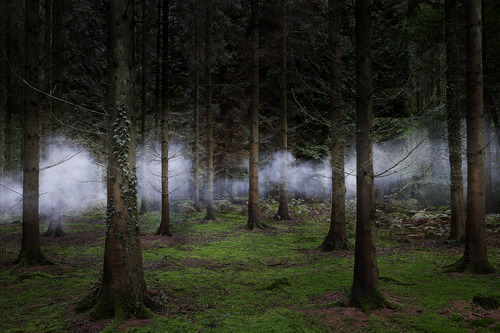 © Ellie Davies
© Ellie Davies
As a teenager my passion was sculpture. I worked in clay mainly and as my projects became more ambitious my parents bought me a small arc welder and I made several large pieces including a 15’ dinosaur skeleton from welded scaffolding clips and bits of broken down agricultural machinery. I wanted to be a sculptor but I couldn’t envisage a life working alone in a studio. After a frustrating Art Foundation year, I took a darkroom course and realized that I could have a creative life without having to be alone. It was a revelation. The black and white darkroom became an addiction.
These first photographic projects made in 2007/8 were mainly self-portraits but I saw them as simply using myself as a model so that I could be independent. I wanted to explore without the constraints of using a model and all that is entailed. It was a very exciting and freeing process. I feel very fond of that work when I look back at it. I can see that I was getting something out of my system, it was a very intense process, and at the same time, I fell in love with the intrinsically photographic process of exploring the relationship between the camera, the viewer, and the viewed. I think this is still a strong element of my process. My photographs in the forest are still a kind of self-portrait.
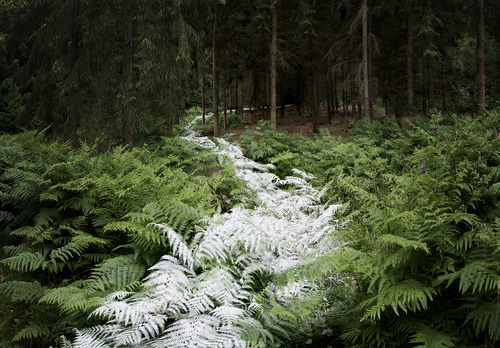 © Ellie Davies
© Ellie Davies
How did your research evolve with respect to those early days?
ED: I was interested in the work of other female photographers using their own bodies and I studied Cindy Sherman and Francesca Woodman. I looked at Feminist research on the Gaze, and the cultural objectification of women’s bodies, I looked at advertising, and at fashion photography.
Tell us about your educational path. MA Photography at London College of Communication. What are your best memories of your studies? What was your relationship with photography at that time?
ED: I began my MA about 4 years after starting down my photographic journey. I had done the darkroom course, followed by one year studying on the Professional Photographic Practice course at London College of Communication (then in Clerkenwell), followed by 3 years working as a photographer’s assistant.
Whilst assisting I began to take small commissions but I soon realized that I didn’t want to work to briefs, I wanted to continue to make my own work and the only way I was going to have complete freedom was to go it alone.

© Ellie Davies
The MA was a huge creative luxury, it allowed me to return to learning and exploring but it was also challenging and frustrating. This was a painful process but it forced me to evaluate my work harshly and to be really honest about when something is working and when it’s not. It was tough but ultimately I feel that this process has made my work stronger.
During the MA I continued to make work focusing on the Gaze and the relationship between figures within the photographic scene, reading Satre and James Elkins, I made the series’ ‘Vantage Point’ and ‘After Dark’. My time as an assistant taught me I didn’t want to use a lot of lights and a big camera, I wanted to be mobile, flexible and self-sufficient. I found ways to work with a very small kit and to use ambient lighting, and this is still the way I work today – camera, tripod, step-ladder and me.
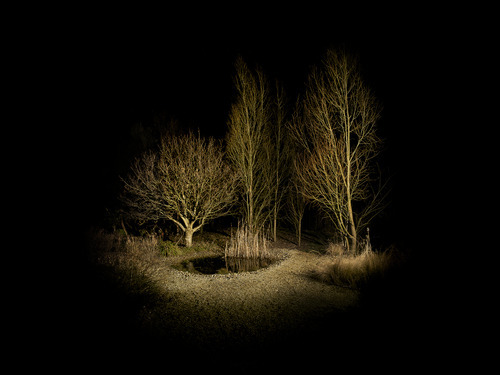
© Ellie Davies
What were the courses that you were passionate about and which have remained meaningful for you?
ED: Studying darkroom probably had the most profound effect on my work. An understanding of processing, printing, and toning gives a real-world background to Photoshop, and in my own work, I try as much as possible to only make these kinds of changes during retouching.
It is very important to me that all the sculptural interventions I make in the forest are ‘real’. Each one usually takes a day to create and photograph and this ‘making’ process is central to my work. It is ironic that I gave up a career in sculpture in favor of a more sociable art-form, only to find myself carving out a working practice that enables me to work alone in the woods and to make things with my hands.
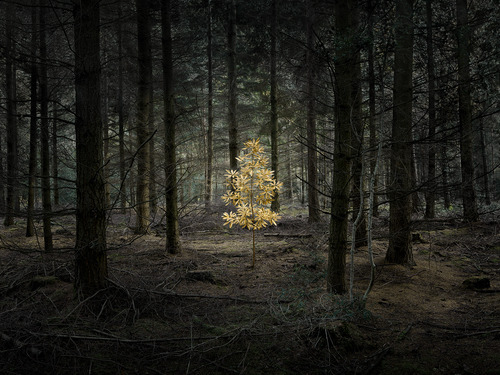
© Ellie Davies
Any professor or teacher that has allowed you to better understand your work?
ED: Crits with my MA tutors had a big impact on my work. Ultimately one of these crits brought the biggest change to my process so far. One of my tutors was examining my ‘Vantage Point’ series and used the word ‘banal’. This word is still burned into my memory and it made me re-evaluate my process and realize that a complete change of approach was needed. Until that point, I had been placing a figure, or figures within a scene, in order to explore their relationship to the camera and to each other within that setting. I realized that I didn’t need people to do this and I began working in the woods.
 © Ellie Davies
© Ellie Davies
The woods are an entity in their own right, and I began exploring my relationship to the landscape and the way that the forest makes us feel. This is so much more direct and personal, and my work had grown and developed from that crucial turning point.
What do you think about teaching methodology in the era of digital and social networking?
ED: My MA was right on the cusp of film and digital. I was one of the few students on the course using digital equipment, and there was very little emphasis on the digital process or work-flow. I hope this is now a much more prominent part of photography courses, but during my own MA I was doing the majority of my learning through trial and error using my own fairly basic digital camera equipment and learning to use programs such as Photoshop and Aperture.
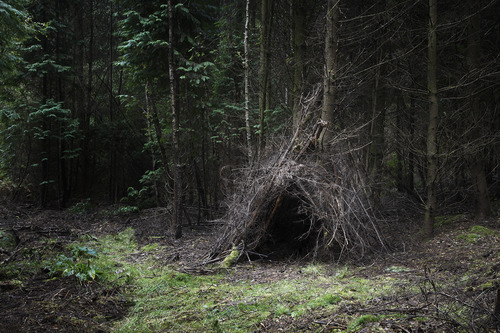
© Ellie Davies
I now do most of my work online, sending images to publications, blogs, galleries, competitions and calls for submissions, and maintaining my website and online presence. I love being able to use all these different mediums, there are so many ways to promote your work online and communicate it to the world. I think it is really important that photography courses make this a significant part of the program so that students are prepared for life after art school.
By looking at your bio I can see that you’ve been featured in many exhibitions. Can you talk about these many experiences? Any particular advice for young photographers aspiring to display and exhibit their work?
ED: I spent the first year after my MA (2009) participating in group shows with contemporaries from the course and other photographers I’d met through photography groups. It's tough when you leave college so it can be really helpful to form a group. We became Latitude Photographers and met at the British Museum once a month to crit each other's new work, and to organize small exhibitions in disused shops and galleries. We also participated in Format Photo Festival in Derby.
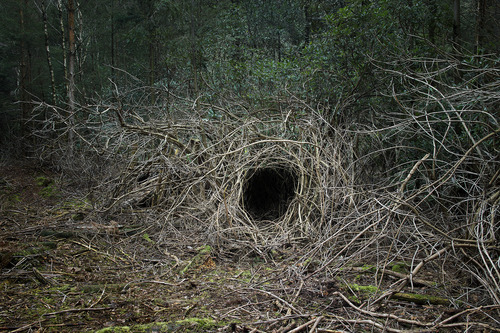
© Ellie Davies
Over the following year, I submitted my work into shows with fewer artists, so that I could show more pieces of work. I also co-curated Sight Unseen at Photofusion Gallery in Brixton, London with three other photographers. In 2011 my work started to be published in print and online photography magazines, I was selected for several international Photo Festivals, and by 2012 I held five solo shows. The point is that the process of exhibiting happened gradually, its hard work, chipping away and persevering, winning some but facing ten times more rejections. Realize that if you aren’t selected it is probably because your work didn’t fit what the judges were looking for, keep going and it will happen!
I feel it is important to build your CV before you start approaching commercial galleries, they want to see some history to your exhibiting. Rather than paying out to rent gallery space try to take things into your own hands and plan shows in small, cheap spaces. Do all the work yourself: promote, curate, hang and gallery-sit your exhibitions.
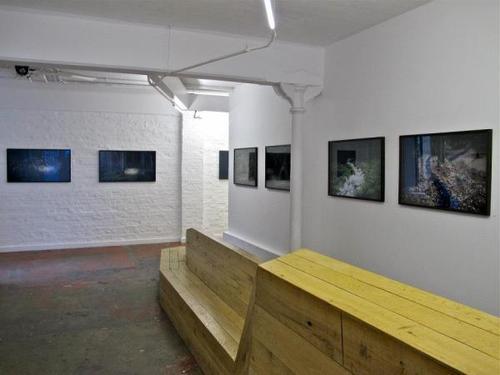 © Ellie Davies ”Come with Me. Solo exhibition of New Landscape’ at Print House Gallery, London. (November 2011)
© Ellie Davies ”Come with Me. Solo exhibition of New Landscape’ at Print House Gallery, London. (November 2011)
My first solo show was at Brucie Collections in Kiev in early 2011. I had won the Fine Art Landscape category of the PX3 Photo Awards and the curator of Brucie Collections noticed my work through this and offered me a solo show. This illustrates the possible opportunities that awards can have, I entered lots of calls in 2009-2011 and these awards helped to build the momentum of my exposure. It’s really important to read the terms and make sure that they are favorable for you, there are a lot of calls for submission out there that require you to ship framed work abroad etc, and this may not be something you feel is worthwhile.
What about your artistic paths and photographic research?
ED: One project emerges from the last, it’s an organic process. I write endless lists of ideas and make notes and drawings, saving them all in a separate folder for each project. I read around the subject and start to sketch out an artist’s statement as I work.
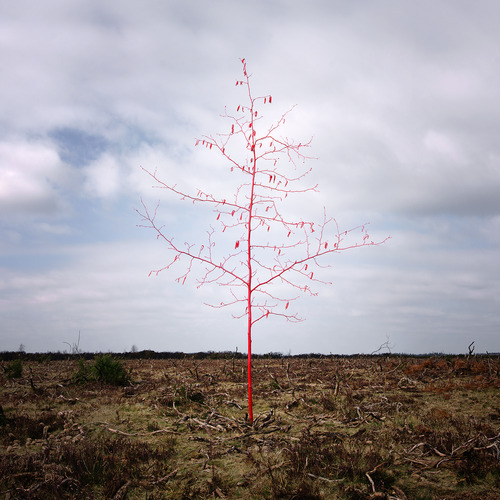 © Ellie Davies
© Ellie Davies
Do you have any preferences in terms of cameras and format?
ED: I use a Nikon D3x, a Manfrotto tripod, and a step ladder. I usually like 35mm but I have recently been making some square format work, which I shoot on the D3x too, 3 frames knitted together – I do this by hand in photoshop.
Is there any contemporary artist or photographer, even if young and emerging, that influenced you in some way?
ED: I love and have been influenced by Jem Southam’s Pond and Rockfall work, Ori Gersht’s Rear Window series, Martina Lindqvist’s Ragskar Island, Jitka Hanzlova’s Quiet Forests and Jo Metson Scott’s Ethereal Forest installations. I’m not sure exactly how this work has influenced me but I know it is inscribed on my brain and it filters into my work, the way that I look at the landscape, and the possibilities of photography.
One day I want to make some work in the mountains. I would combine my two passions in life, climbing and the landscape. I love the work of Anton Jankov, Jochen Klein and Meike Nixdorf. Probably the most precious photo-book I own is Boomoon’s Stargazing at Sokcho – the eerie, cold, quiet mountains transport you to another world.
You have been featured in many publications. Are you also working on something on your own?
ED: I have started to look into this in the last year, more to come I hope.
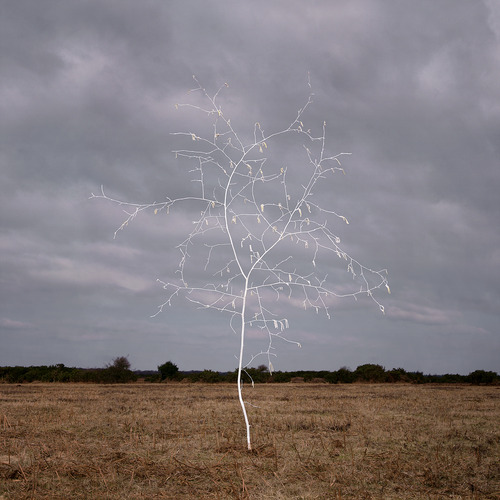 © Ellie Davies
© Ellie Davies
Three books of photography that you recommend?
ED: ‘Art Photography Now’ but Susan Bright, published by Thames and Hudson, 'Art and Photography’ by David Campany, published by Phaidon, and Land and Environment Art’ by Jeffrey Kastner and Brian Wallis, published by Phaidon.
Is there any show you’ve seen recently that you find inspiring?
ED: I took my baby son to the Light Show at the Hayward Gallery, we were both inspired!
Projects that you are working on now and plans for the future?
ED: I have just launched my new series ‘Between the Trees’. There are currently eight images and a Triptych. This series is ongoing so I will be making new images to add to it over the winter and coming spring. I am working towards a solo show at the Richard Young Gallery in Kensington in London in the autumn of 2014.
---
LINKS
Ellie Davies
England
share this page